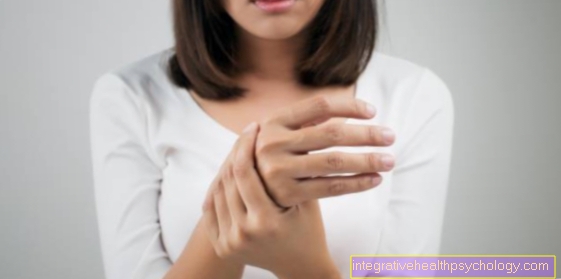balance
Synonyms
Vestibular apparatus, vestibular organ, vestibular organ, balance ability, coordination of movements, dizziness, balance organ failure
definition
Balance in the sense of the ability to balance is defined as the ability to keep the body and / or part of the body in balance, or to bring it back into balance during movements.
Please also read our topic: coordinative skills

Function of balance
The organ of equilibrium is used to measure linear acceleration as well as rotational acceleration.
The Macules are responsible for the detection of linear acceleration as well as for the registration of deviations of the head from the vertical. This works with the help of the Statolith membrane, since the statoliths have a greater inertia compared to the surrounding endolymph. It follows from this that the endolymph with the cilia of the hair cells is deflected during movement, but the statolith membrane remains behind. This deflection of the cilia causes them to be excited by opening ion channels (sodium, potassium, calcium) and in this way a nerve impulse can be generated and transmitted to the brain.
The Cristae the semicircular canals take over the registration of the rotational acceleration. Here, too, inertia plays a role as a measuring mechanism. The Cupula behaves less sluggishly than the surrounding endolymph. When the head rotates, the endolymph remains in the semicircular canals due to its inertia compared to the cupula, which results in a relative movement with deflection of the cilia of the sensory cells. This stimulus sets the same transmission mechanism in motion as with the Macules described.
Ultimately, the measurement of these accelerations is used to offset other information so that, on the one hand, balance can be maintained and, on the other hand, an object can be fixed when the head is moved and a constant visual impression can be obtained. The latter is known as vestibulo-ocular Reflex, which is used for spatial orientation.
This requires the interaction of eye muscles for compensatory eye movements, of neck muscles for compensatory changes in the position of the neck and of the organ of equilibrium. The whole thing enables the above-described interconnection of the individual components in the central nervous system (brain, brain stem, spinal cord).
What is the sense of balance?
The sense of balance is a sensory perception that gives the body information about its position in space. In this way, the sense of balance serves to be able to orientate oneself in space and to adopt a balanced posture, both at rest and when moving.
The body receives information from the inner ear, eyes and joints. These all come together in the brain stem and are offset there. The inner ear consists on the one hand of the two macular organs sacculus and utriculus, which perceive vertical (for example when driving an elevator) and horizontal (for example when starting a car) acceleration. On the other hand, it is made up of the three semicircular canals, which can detect rotational movements in any spatial direction.
Read more on the topic: Sense of balance
The eyes receive visual information and also pass this on to the brain stem. In the joints we also have so-called proprioceptors, which determine in which position the respective joint is currently. If the brain receives contradicting information, it can lead to dizziness. For example, if you are inside a ship in heavy seas, the balance organ of the inner ear mediates strong accelerations in many different directions. The eye, however, wants to convey to us that the room is at rest. This triggers a feeling of dizziness in the person concerned.
Examination of the organ of equilibrium
The organ of equilibrium can be checked for functionality in various ways.
The simplest type of test enables walking and standing tests with both eyes open and closed.
Another possibility is the swivel chair trial. Here, the patient is rotated around his own axis on a chair for a long time. After slowing down, a nystagmus, depending on the direction of rotation, occurs in healthy people as a result of the irritation of the semicircular canals.
Read more on the topic: Nystagmus
Furthermore, the vestibular organ (Balance organ) can also be checked by means of caloric stimulation. To do this, the horizontal semicircular canals are excited one after the other with cold or warm water, which also stimulates healthy people Nystagmus occurs with a certain direction.
A nystagmus is understood to mean eye movements with a slow and a fast component in the horizontal (right left). The direction of the fast component gives nystagmus its name (Right or left nystagmus).
How can you train your balance?
Balance can be trained just like strength, endurance or speed. A good example of this are toddlers who, through repeated attempts, develop from an unsafe to a safe gait pattern.
Therefore, this transfer is obvious and athletes of all ages should be able to improve their balance and train. Targeted training can also improve the patient's balance. It only becomes problematic if the equilibrium is neglected and our equilibrium develops back as a result.
There are many reasons why balance should be trained. Older people can thus improve their gait pattern and are more secure on their feet during everyday movements. Even in old age, this ensures independence and mobility and thus a sense of life.
Balance exercises should mainly be done while standing, because sitting and lying down cannot train balance as well. Good balance training is best done in the late morning or late afternoon, as this is when the body is usually most active. Usually you should take about half an hour for your balance training and find enough space and quiet.
You might also be interested in this topic: Coordination training
In order to improve balance, one has to put the body in a situation where balance is required. For example, if we go into the one-legged stance, the head receives, based on sensory perception, the information that the stance has become less secure and then tries to induce compensatory movements in the ankles or arms. Another stage is the closing of the eyes, so that the body lacks essential information to maintain balance. In order not to fall, the brain changes its tactics and amplifies the impressions of the other sense organs. The actual training effect of balance training is the flexible adaptation of the brain to new circumstances. Information is evaluated more effectively in order to compensate for missing information.
Find out more about the topic: coordinative skills
When doing balance training, you should start with light exercises and then increase over time. It is also advisable to use a soft surface at the beginning so that not much can happen in the event of a fall.
Exercises to improve balance
In general, balance exercises can be done anytime and anywhere, but they are best done while standing or while walking. In addition, small devices can also be used for balance training.
- The first exercise is to shift your weight in an upright position in all directions without having to lunge. The upper body is erect and the gaze is directed forward. The feet are close together and the arms are placed on the sides of the upper body. Now the body's center of gravity is first shifted forward. The center of gravity should only be shifted so far that you do not lose your balance and you should feel the changing pressure load under the soles of your feet.
- Another exercise is the so-called tightrope walker, where the starting position is slightly different than when moving to the side. The feet stand one behind the other on an imaginary line and the arms are stretched out to the side to ensure balance. Now you begin to turn your head alternately towards the ceiling and towards the floor. Other variations include closing and opening your eyes, moving your arms up and down, or turning your head to the right and left.
- The one-legged stance is another classic balance exercise that can be combined with different variations. For example, if you stand on your right leg, you can bend your left leg and put your hands on your hips. You can also stretch your arms out or cross them in front of your chest. You can stand on the ball of your foot or on your heel, do the exercise alone or with a partner, and keep your eyes open or closed.
- Jump steps are a dynamic balance exercise in which you don't stand in one place and train your balance, but move through space. You start on one leg and then make a jump, after which you land on the other leg. Then you jump again and land on your starting leg again. In this exercise, you can use your arms to control your balance or, with variations, you can consciously limit your mobility. The exercise can also be performed with your eyes open or closed to vary the level of difficulty. In addition, you can change the jump distance, you can start with small jumps and slowly but steadily increase the distances.
Diseases of the organ of equilibrium
Meniere's disease
Menière's disease or Menière's disease is a disease of the inner ear, which manifests itself through the three characteristic symptoms of dizziness, ringing in the ears and hearing loss. The dizziness attacks usually start suddenly and unpredictably and can last from a few minutes to even hours. With those affected, everything seems to be spinning around and they suffer from nausea and vomiting. The tinnitus is paired with hearing loss on the affected side. Symptoms are usually only noticeable in one ear.
Read more on the topic: Symptoms of Meniere's disease
The Menière attacks occur in bursts and are repeated at irregular intervals. People between the ages of 40 and 60 are most frequently affected. The cause of this disease is a so-called "endolymphatic hydrops". As a result of a shift in mineral salts (electrolytes), the endolymph in the inner ear increases in volume, stretching it and increasing its pressure and thus detecting false sensory impressions.
What triggers this increase in fluid has not yet been clarified. This also complicates the treatment of Menière's disease. One can only treat the symptoms. On the one hand, drugs help against dizziness (antivertiginous) and against nausea (antiemetics) in acute attacks. At the same time, these drugs reduce the severity of an attack. An alternative to this are drugs such as betahistine for prevention (prophylaxis), which are intended to reduce the number of attacks.
Also read the article on the topic: Therapy of Meniere's disease
Positional vertigo
Positional vertigo, medically also called benign, paroxysmal positional vertigo (BPLS - benign, paroxysmal positional vertigo), is a feeling of dizziness that occurs when certain movements or changes in body position occur.
Read more on the topic: Positional vertigo
Positional dizziness is basically a harmless disease, but it is usually very uncomfortable for those affected. You often talk about the "carousel in your head". The sudden attack of dizziness often occurs with rapid changes in head position, such as when straightening up from a lying position, bending over quickly or turning over in bed, and usually lasts only a few seconds. The background to these vertigo attacks are tiny, detached ear stones (otoliths) in the inner ear.
When the head moves, these trigger a kind of suction in the endolymph fluid and simulate a strong acceleration in the brain. The sensory cells of the eye, on the other hand, provide a stationary, non-moving image. This contradicting information triggers a vertigo attack in the person concerned. Therapeutically, an ENT doctor can perform special positioning maneuvers on the patient so that the small ear stones leave the semicircular canals and come to lie where they no longer trigger attacks of vertigo.
You might also be interested in this topic: Exercises against positional dizziness



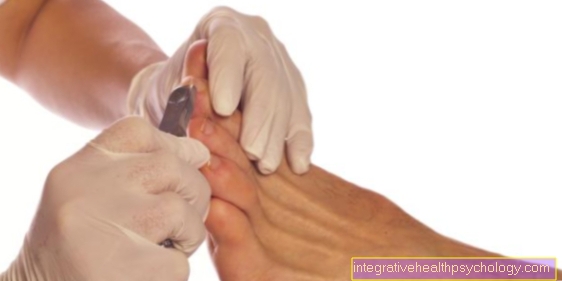
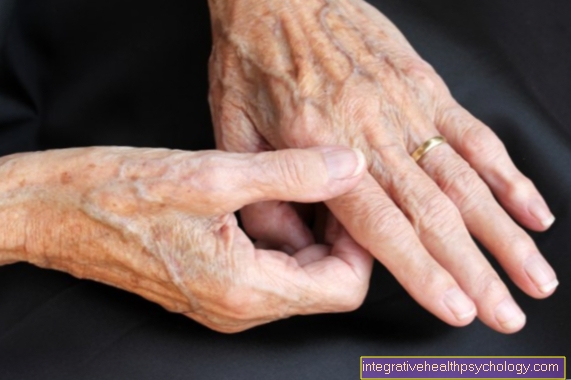
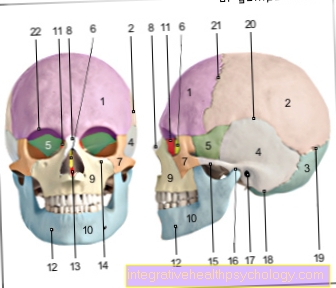


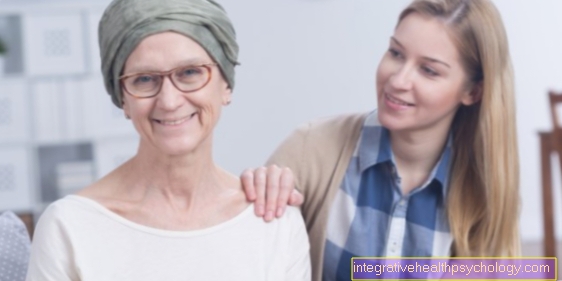



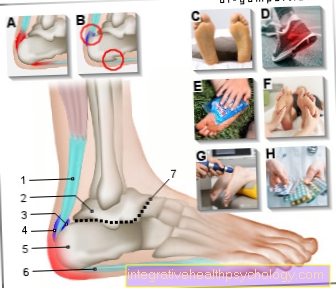
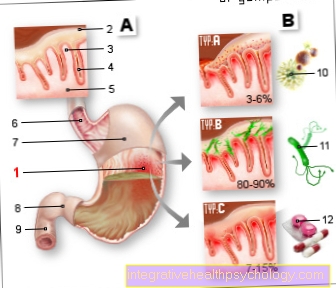
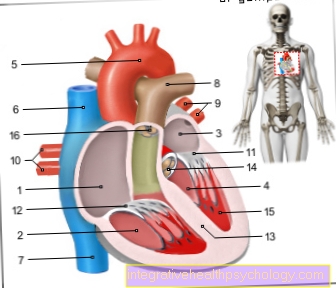
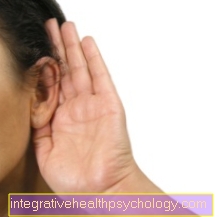


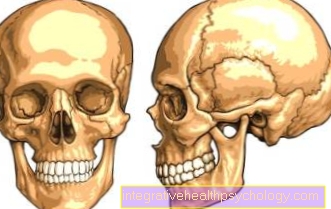
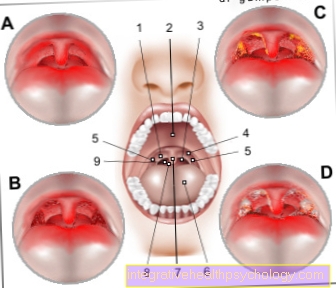
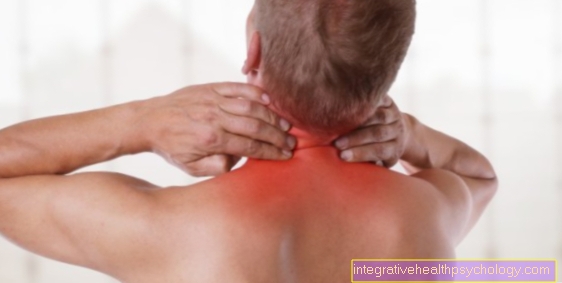

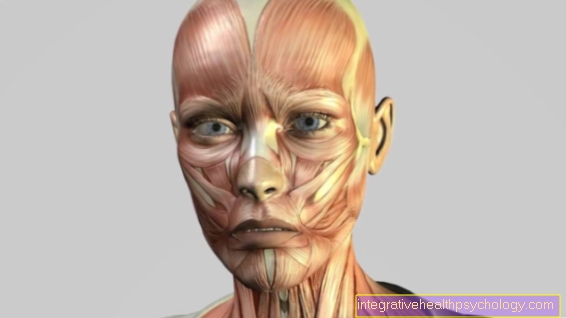
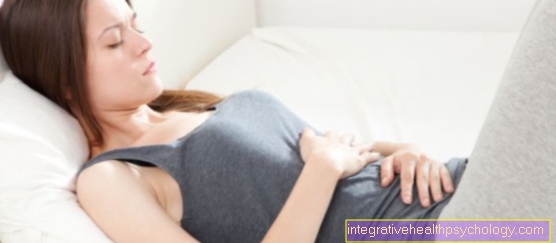


.jpg)

